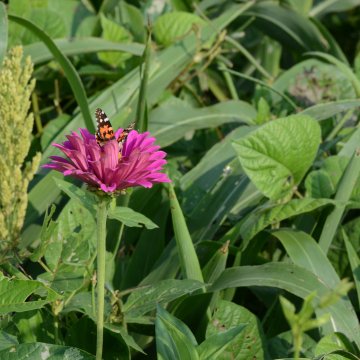Explore our blog featuring articles about farming and irrigation tips and tricks!
Four Creative Ways Soil Health Pays

By: Bill Spiegel
Despite a lackluster farm economy, interest in cover crops and soil health continues to soar. In the western Corn Belt, some farmers who adopt cover crops as part of their crop rotation are seeing decreased herbicide costs, improvement in nutrient efficiency, and better cash crop yields. Plus, the cover crops add diversity to otherwise predictable crop rotations.
Farmers at a Soil Health Field Day near Yoder, Kansas, on August 21 shared some of the top tricks they’ve learned over years of using cover crops in their rotations.
1. COMPANION CROPS OUTCOMPETE WEEDS
Before the plow turned the Kansas sod over and fields were cultivated, the prairie was covered in a mix of plant species. It stands to reason that Mother Nature wants the soil covered, says Chad Basinger, who farms near Pretty Prairie, Kansas. Basinger tries to keep living roots in the soil at all times. Even after wheat harvest, the Pretty Prairie, Kansas, farmer has planted a mix of grain sorghum (for cash) with cover crops (to boost soil biology and keep weeds from establishing). “We don’t want to leave any gaps in the system,” says Basinger, who, after wheat harvest in June, applied a burndown herbicide to kill weeds growing in the wheat stubble. He followed with a mix of legumes and flowering plants between the sorghum rows to cover the field. He estimates the break-even yield for grain sorghum to be 21 bushels per acre. On wheat stubble ground left open, Basinger has already sprayed two to three times to kill summer flushes of marestail and pigweeds, and he’ll likely have to spray at least once before planting wheat in the fall.
Stay up to date on all T-L news and get alerts on special pricing!


